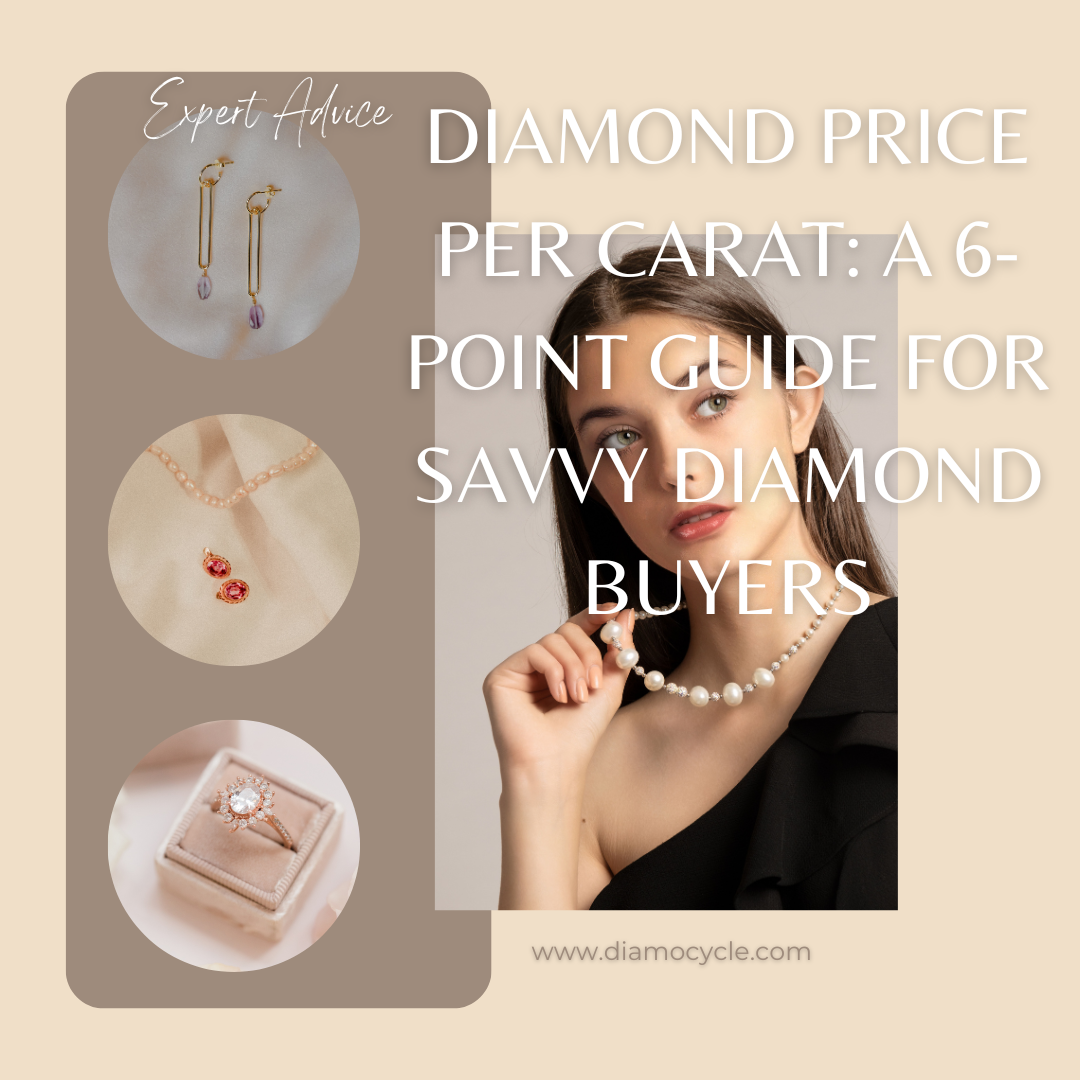Your cart is currently empty!
If you’re shopping for a diamond, you may have heard the term “diamond price per carat” thrown around. It’s an essential concept to understand if you want to make an informed purchase. Diamond price per carat refers to the cost of one diamond weighing one carat, equal to 0.2 grams. In this guide, we’ll explain the basics you need to know about diamond price per carat and how it affects the value and cost of a diamond. Our family legacy in diamonds began in 1857, over 160 years ago, and we take pride in shining light on the illusive diamond world.
What Affects Diamond Price per Carat?
Several factors influence the price per carat of a diamond, including:
- Cut: The cut of a diamond refers to its proportions, symmetry, and polish. A well-cut diamond reflects light in a way that maximizes its brilliance and sparkle. A diamond that is poorly cut may look dull and lackluster. The better the cut, the higher the price per carat.
- Clarity: The clarity of a diamond refers to the absence of inclusions and blemishes. Inclusions are internal flaws, while blemishes are external ones. The fewer inclusions and blemishes a diamond has, the higher its clarity grade, and the higher the price per carat.
- Color: Diamonds come in a range of colors, from colorless to yellow, brown, and even pink and blue. The most valuable diamonds are colorless, with a D grade on the color scale. As the color grade moves down the scale, the diamond becomes more yellow or brown, and the price per carat decreases.
- Carat Weight: As the carat weight of a diamond increases, the price per carat also increases. Larger diamonds are rarer and more valuable, so they command a higher price per carat.
- Shape: The shape of a diamond can also affect its price per carat. Round diamonds are the most popular and command a higher price per carat than other shapes. Fancy-shaped diamonds, such as emerald, pear, or princess, may be less expensive per carat, depending on their other characteristics.
- Market Conditions: The diamond market can be volatile, and prices can fluctuate based on supply and demand. Economic conditions, geopolitical events, and other factors can also affect diamond prices.
How to Get the Best Value for Your Money
When shopping for a diamond, it’s essential to consider all the factors influencing its price per carat. However, the price per carat is just one part of the equation. To get the best value for your money, you also need to consider the overall quality and characteristics of the diamond.
One way to get the most outstanding value for your purchase is to shop for pre-owned diamonds. At Diamocycle, we specialize in pre-owned diamond rings listed by consignment and offer significant savings compared to new diamonds. We provide a secure third-party inspection by a gem lab and insured shipping, and we hold the funds until the transaction is complete as part of our buyer protection services. By buying a pre-owned diamond, you can get a higher quality diamond with better characteristics than you might be able to afford if you were buying new.
Another way to get the best value for your money is to work with a trusted jeweler who can guide you through purchasing. At Diamocycle, our team of diamond experts is here to help you choose the perfect diamond ring that fits your budget and preferences and offer you concierge-level white glove service throughout the process.
Diamond price per carat is a critical concept to understand when shopping for a diamond. Considering all the factors that influence a diamond’s price per carat, you can make an informed purchase that meets your needs and budget. At Diamocycle, we offer a wide selection of pre-owned diamond rings at competitive prices. Shop with us today and find the perfect diamond ring that will last a lifetime.

